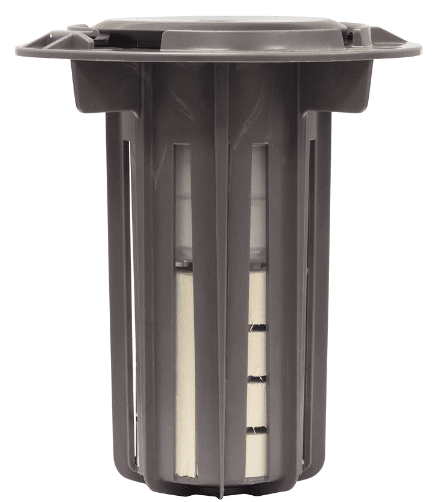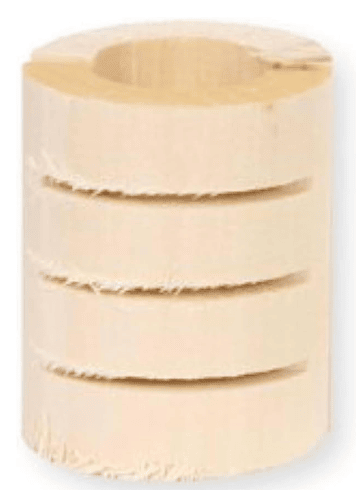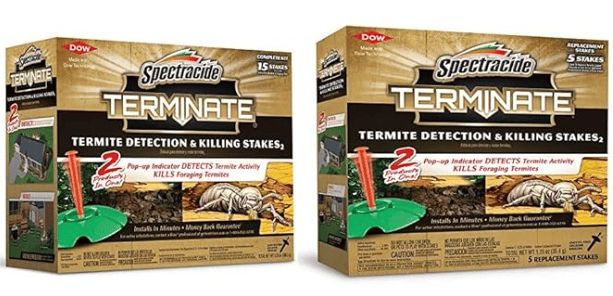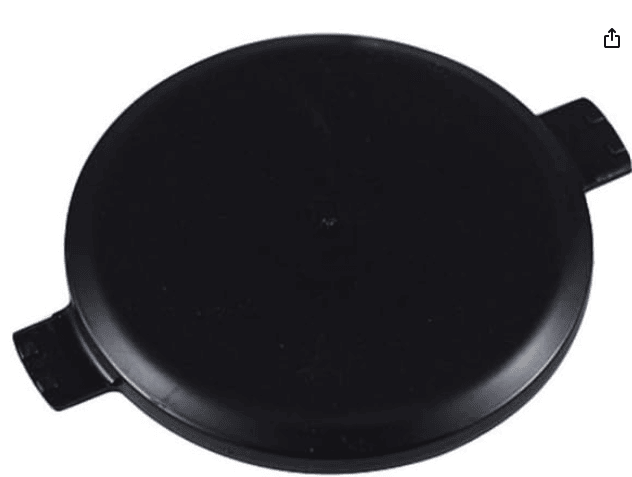The Best Termite Bait Stations – Do They Work?
Explore the effectiveness of termite bait stations with our complete guide. Learn about different types, from DIY to professional, indoor to subterranean.
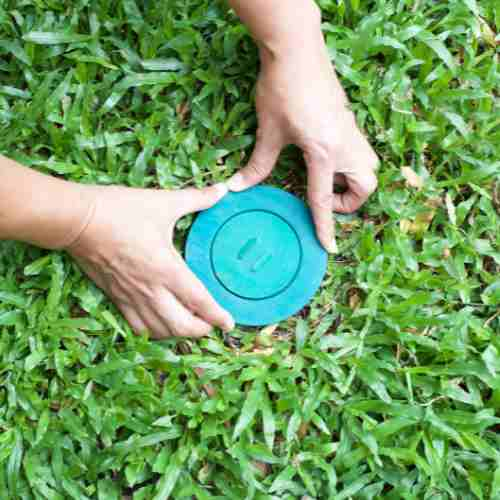
Termite infestations can be a silent yet devastating issue for homeowners and organic gardeners, causing significant structural damage if left unchecked.
Among the solutions available, termite bait stations offer a strategic and environmentally friendly method to combat these pests. In this comprehensive guide, we will explore what termite bait stations are, the various types available, and discuss their effectiveness in both preventing and eradicating termite colonies. Noone likes having termites in their home or organic garden.
From DIY termite bait stationstons to professional systems, and indoor to subterranean setups, this guide will provide you with all the information needed to make an informed decision on using termite bait stations to protect your property.
What are Termite Bait Stations?
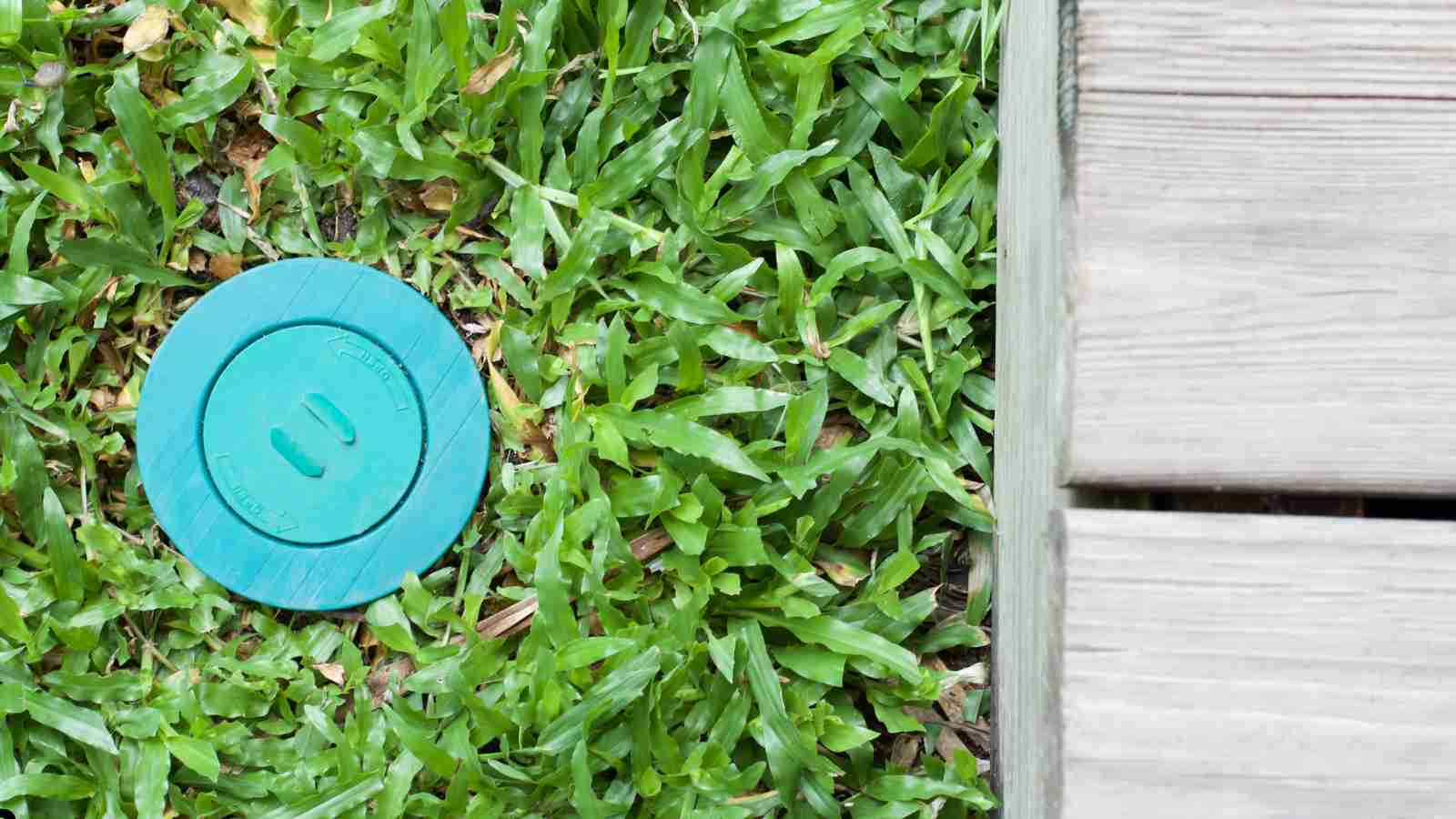
Termite bait stations are a form of termite control that involves installing stations around a property to monitor and bait termites. These stations contain a slow-acting insecticide that the termites carry back to their colony, eventually killing the colony from within. They are designed to be a less invasive alternative to traditional barrier treatments, offering a targeted approach to eliminating termite populations.
The Best Termite Bait Stations
DIY Termite Bait Stations
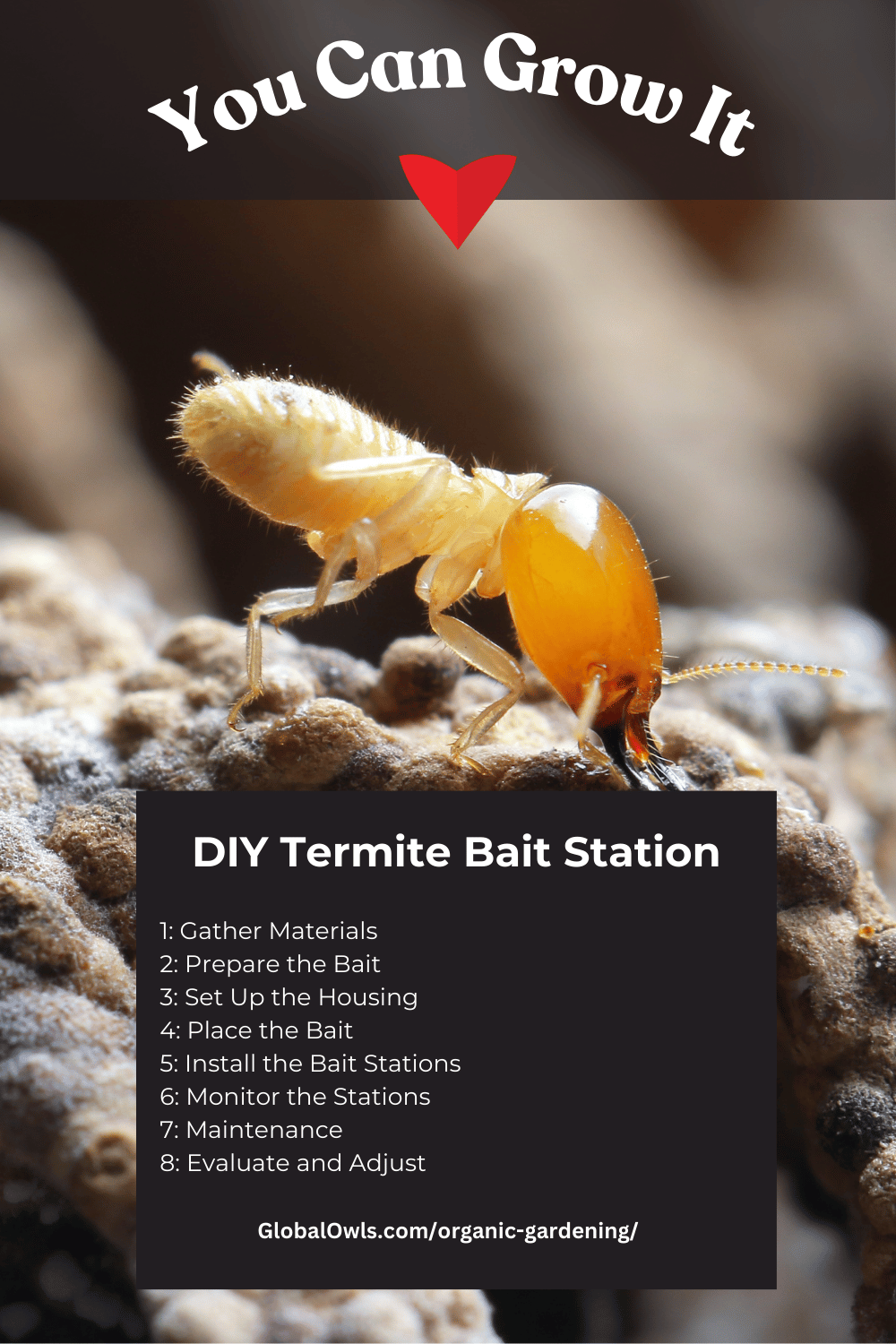
Creating your own DIY termite bait stations can be an effective first line of defense against termites. It’s a cost-effective method that allows homeowners to take a proactive stance in monitoring and controlling termite activity. Here’s how you can make and deploy DIY termite bait stations:
Step 1: Gather Materials
You will need:
- Cardboard or untreated wood strips (termites prefer soft, fibrous materials)
- Boric acid or another slow-acting termiticide (ensure it’s labeled for termite control)
- A plastic container or PVC pipe sections (for housing the bait)
- Drill (for making holes in the container)
- Gloves and safety goggles (for protection during handling of chemicals)
Step 2: Prepare the Bait
Mix the boric acid with water according to the instructions on the label to create a solution. Soak the cardboard or wood strips in this solution. Allow them to dry so that they are moist but not dripping. The boric acid acts as a slow-acting poison that will be carried back to the colony by the worker termites.
Step 3: Set Up the Housing
Take the plastic containers or PVC pipes and drill several holes around them, big enough for termites to enter. The holes should be uniform to allow easy access for termites from different sides.
Step 4: Place the Bait
Insert the treated cardboard or wood strips into the containers. Make sure they are snug and occupy most of the space inside the container. This setup will protect the bait from external elements and ensure that termites can access and carry the poisoned material back to their colony.
Step 5: Install the Bait Stations
Bury the containers in the ground around your property where you suspect termite activity. The top of the container should be flush with the soil surface to allow easy entry for the termites. Space the stations approximately 10 to 15 feet apart around the perimeter of your home.
Step 6: Monitor the Stations
Check the bait stations regularly, at least once a month. Look for signs of termite activity, such as the presence of mud tubes or the actual termites themselves. If you find that the bait has been taken, replace it with fresh treated cardboard or wood.
Step 7: Maintenance
Continue to monitor and replenish the bait stations as needed. It’s important to maintain them consistently, especially during the warmer months when termite activity is highest.
Step 8: Evaluate and Adjust
If after several months you see significant termite activity in the bait stations, consider consulting a professional pest control service. While DIY bait stations can be effective, severe infestations might require more advanced solutions.
By following these steps, you can create an effective termite monitoring and control system. DIY bait stations are a good starting point for termite prevention, but they should be used in conjunction with professional inspections and treatments if termites continue to be a problem.
Pros and Cons of Termite Bait Stations
Pros:
- Environmentally friendly: Less invasive and use fewer chemicals than traditional methods.
- Targeted solution: Directly targets the termite colony, potentially eliminating the queen and colony over time.
- Safe for use around children and pets: When installed correctly, they are generally safe because the bait is contained.
Cons:
- Slow action: It can take several months to be effective.
- Regular maintenance: Stations require regular inspection and maintenance.
- Cost: Can be more expensive over time due to maintenance and monitoring requirements.
Above Ground Termite Bait Stations
Above-ground termite bait stations are installed directly in areas where termite activity is visible, such as inside homes or on exterior walls where termites enter. These are effective for dealing with infestations actively visible and accessible from inside the structure.
Subterranean Termite Bait Stations
Subterranean termite bait stations are placed in the soil around the perimeter of a home or building. These target the more common subterranean termites, which live underground and are the most destructive. The stations intercept these termites before they reach the structure, providing an effective barrier and treatment method.
Indoor Termite Bait Stations
Indoor termite bait stations are used within a property where termite activity has been detected. These stations are typically less common and are used when there’s an existing problem inside the structure that cannot be managed with external stations alone.
Do Termite Bait Stations Work?
Termite bait stations are effective when used correctly. They work by exploiting the natural behaviors of termites to spread the bait through the colony, leading to its eventual collapse. Success depends on the proper placement, regular monitoring, and maintenance of the stations.
How Long Do Termite Bait Stations Last?
The lifespan of termite bait stations depends on the brand and environmental conditions. Generally, the stations themselves can last several years if not damaged. However, the bait inside needs regular replacement according to the manufacturer’s guidelines, usually once every few months to a year, to ensure the station remains effective.
Conclusion
Termite bait stations represent a pivotal advancement in pest control strategies, blending safety with effectiveness. While they may require patience and ongoing maintenance, the benefits of using such systems—ranging from minimal environmental impact to targeted extermination—are substantial. By understanding the different types of bait stations and their specific applications, homeowners can take proactive steps to defend their homes against termite invasions. Remember, the key to successful termite management lies in consistent monitoring and maintenance of your chosen bait station system, ensuring your home remains structurally sound and termite-free.
FAQ
What are termite bait stations?
Termite bait stations are small, cylindrical devices placed around a property’s perimeter to monitor and control termite populations. They contain bait material that attracts termites, which then ingest the bait and share it with their colony, ultimately leading to the colony’s decline or elimination.
How do termite bait stations work?
Termite bait stations work by exploiting the natural foraging behavior of termites. Termites are attracted to the bait inside the stations and feed on it. The bait contains slow-acting insecticides that the termites unknowingly transfer to other colony members through trophallaxis, gradually killing the colony.
What are the benefits of using termite bait stations?
The benefits of using termite bait stations include non-invasive treatment (no drilling into foundations or floors), targeted application of pesticides, and ongoing monitoring capabilities that help prevent future infestations.
How often should termite bait stations be checked?
Termite bait stations should be checked regularly by a pest management professional. Typically, inspections are recommended every two to three months to assess termite activity and replenish the bait, if necessary.
Are termite bait stations effective against all types of termites?
Termite bait stations are most effective against subterranean termites, the most common type found causing damage in homes. They are not effective against drywood termites, which do not forage in the soil.
Where should termite bait stations be installed?
Termite bait stations should be installed in the soil around the perimeter of a building at regular intervals, near potential entry points, and in areas with conducive conditions for termite activity, such as moist soil and near wood structures.
Can termite bait stations be used for both residential and commercial properties?
Yes, termite bait stations are suitable for both residential and commercial properties. They provide an effective and discreet termite control solution for any property susceptible to termite infestations.
What maintenance do termite bait stations require?
Maintenance of termite bait stations involves regular monitoring and rebaiting by a professional. The stations must also be kept free of debris and water to remain effective, as flooding or clogging can make them less attractive to termites.
How long does it take for termite bait stations to eliminate a colony?
The time it takes for termite bait stations to eliminate a colony can vary, typically ranging from a few months to over a year, depending on the colony’s size and the environmental conditions.
Are there any environmental concerns associated with termite bait stations?
Termite bait stations pose minimal environmental risk compared to traditional soil treatments, as the amount of insecticide used is lower and more contained. However, proper handling and disposal by a professional are recommended to avoid any potential environmental impact.
What types of insecticides are used in termite bait stations?
Termite bait stations typically use slow-acting insecticides, such as hexaflumuron or diflubenzuron, which are insect growth regulators (IGRs). These chemicals interfere with the termites’ ability to molt, which is essential for their growth and survival, leading to the gradual decline of the colony.
Can I install termite bait stations myself, or do I need a professional?
While DIY termite bait station kits are available, professional installation and monitoring are highly recommended. Professionals have the expertise to strategically place and maintain the stations for maximum effectiveness.
How discrete are termite bait stations?
Termite bait stations are designed to be unobtrusive and blend with the surrounding landscape. They are typically installed flush with the ground, making them hardly noticeable to anyone not specifically looking for them.
Will termite bait stations attract termites to my property?
Termite bait stations do not attract termites from distant locations; rather, they intercept foraging termites that are already present near your property. The stations serve to monitor and control local termite populations effectively.
What should I do if a bait station shows signs of termite activity?
If termite activity is noted in a bait station, contact a pest control professional immediately. They will assess the situation and possibly replace the monitoring bait with a more potent bait formulation to begin the process of colony elimination.
How safe are termite bait stations around pets and children?
Termite bait stations are generally safe around pets and children as the bait is contained within a secure, tamper-resistant station placed in the ground. However, it’s still advisable to install them out of direct reach of children and pets to ensure safety.
Can weather conditions affect the efficacy of termite bait stations?
Yes, extreme weather conditions like flooding or prolonged drought can affect the efficacy of termite bait stations. Regular inspections will ensure they remain functional and properly positioned despite weather changes.
How cost-effective are termite bait stations compared to traditional termite treatments?
Initially, termite bait stations may require a higher investment for installation and monitoring. However, over time, they can be more cost-effective as they prevent extensive termite damage and reduce the need for more invasive and expensive treatments.
What is the lifespan of a termite bait station?
The physical structure of a termite bait station can last several years if not damaged by lawn equipment or weather. However, the bait inside needs regular replacement according to the manufacturer’s recommendations and based on monitoring results.
Are termite bait stations a standalone solution for termite prevention?
While termite bait stations are an effective component of a termite management plan, they are best used as part of a comprehensive approach that includes chemical barriers, regular inspections, and modifications to the property to reduce termite food sources and entry points.
